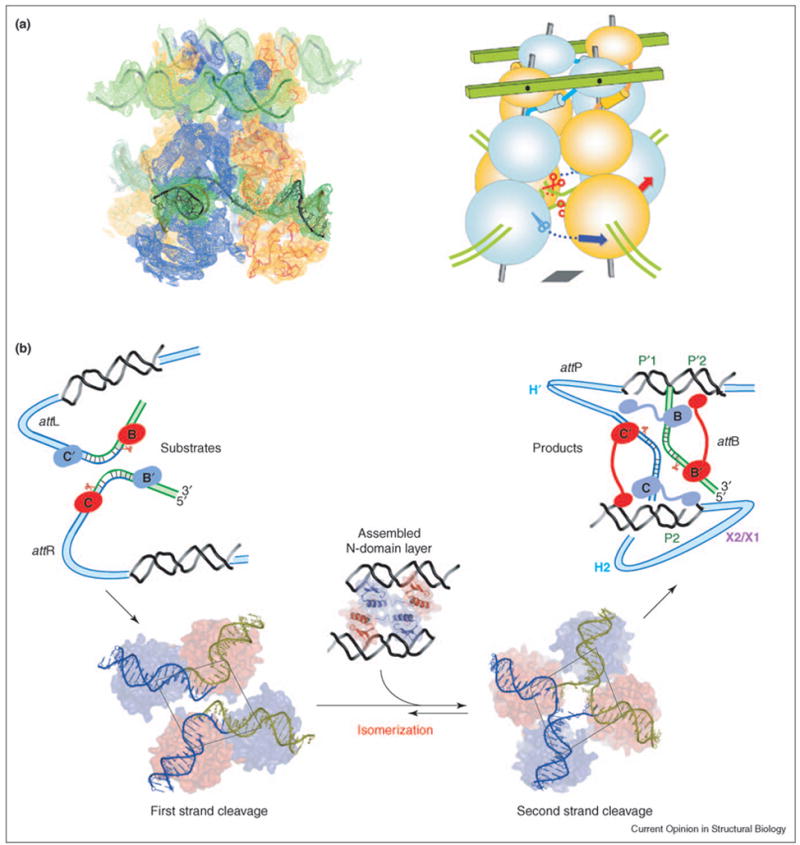Figure 4.

Illustration of the proposed role of N-domains in the coordination of Int activity within the tetramer. (a) The electron density calculated from the experimental phases is compared with the model to highlight features of the assembly of four Int molecules. The N, CB and catalytic domains of each protomer are stacked on an imaginary central rod, which is connected through the N-domain to arm DNAs, represented as green planks. Note that an N-domain is stacked on the same rod as the CB and catalytic domains of the neighboring Int. The relative positions of the N-domains are determined by their interactions with the arm DNAs and with each other. Through a poorly understood allosteric mechanism, this assembly positions the catalytic domains at their respective corners of the imaginary parallelogram [bottom right panel of (b)]. The plane of the tetrameric catalytic domains illustrated within the parallelograms in (b) is denoted by a gray parallelogram in the cartoon. (b) In the left panel, the N-domains are shown before the formation of the tetrameric complex with their respective arm DNAs and the catalytic domains are shown positioned for the first pair of DNA cleavages (at sites B and C). The pair of Ints lying on the short diagonal of the parallelogram is active, whereas those lying on the long diagonal are inactive. Assembly of the N-domains in complex with the arm DNAs reorients the parallelogram so that the alternate pair of catalytic domains lies on the short diagonal of the parallelogram, thus positioned for the second pair of DNA cleavages and strand exchanges at the C′ and B′ core sites (right panel).
